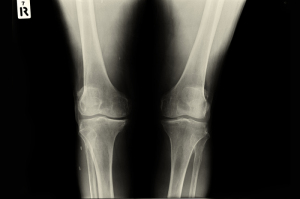por
Lauren Dubinsky, Senior Reporter | November 10, 2016

X-ray image shows osteoporosis
Radiotherapy is the standard treatment for many forms of cancer, but it puts patients at risk for osteoporosis, according to the National Comprehensive Cancer Network. Researchers from the University of Pennsylvania School of Medicine have found a way to preserve bone density in those patients.
About 50 percent of all cancer patients receive radiotherapy during the course of the illness, according to a study published in the International Journal of Medical Sciences. They either receive it alone or along with chemotherapy, surgery or targeted drugs.
Radiotherapy has historically been known to cause damage to nearby healthy tissue. In recent years, the industry has developed computer-assisted guidance to address that issue, but that doesn’t reduce the patient’s risk of losing bone density and suffering from broken bones.
The researchers found that using a monoclonal antibody (Scl-Ab) called Romosozumab to halt the circulation of sclerostin, a protein that inhibits bone formation, prevents radiotherapy-induced osteoporosis.
With that knowledge, they set out to determine if weekly treatment with Scl-Ab would prevent focal radiotherapy-induced osteoporosis in mice. They uncovered that Scl-Ab prevented the deterioration of trabecular bone by preserving the number and activity of bone-forming cells.
Scl-Ab sped up the process of repairing DNA in bone cells after the patient received radiotherapy by reducing the amount of DNA double-strand-break markers and increasing the amount of DNA repair proteins. That prevented the bone cells from undergoing a radiation-induced cell-death process.
The researchers concluded that, “our studies provide proof-of-principle evidence for a novel use of Scl-Ab as a therapeutic treatment for radiation-induced osteoporosis, and establish molecular and cellular mechanisms that support such treatment.”
The study was supported by the National Institutes of Health and was published in the Journal of Bone & Mineral Research.
